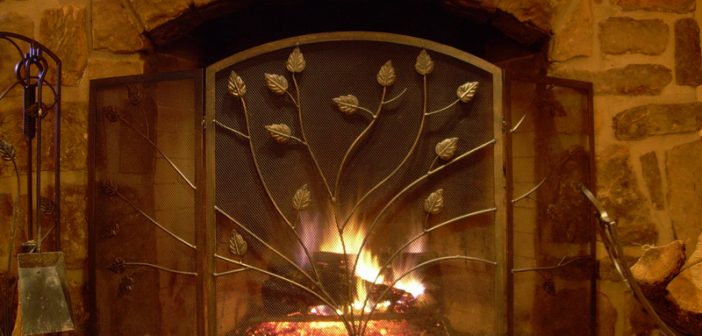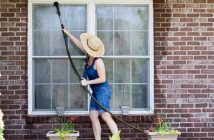After an intensely irritating and lengthy winter, we are all enthusiastic that spring is finally here. With the fading memory of cold winter days, we are less likely to need the warmth of a fire in our homes. As a matter of fact, most of us are already planning for more outdoorsy activities. As the fireplace season starts to wind down, we need to prepare our fireplaces for the coming seasons. Furthermore, spring is the best time for chimney maintenance. Aside from helping to keep your family safe, proper maintenance will undoubtedly save you time and money. Unfortunately, not every homeowner knows how to prepare their fireplace and chimney for the season change.

When it comes to prepping a fireplace for the remaining part of the year, the steps needed may vary depending on the type of unit you have installed. Compared to gas burning fireplaces, wood burning fireplaces require a slightly more involving process. Here is a detailed guide on how to close down your fireplace.
Clean your fireplace
Cleaning up the inside your fireplace is the first step of the prepping process. A clean-up is necessary for two reasons:
• Cleaning gives your fireplace a better look and prepares it for a fresh start come fall.
• It helps to keep your indoor air fresh.
Before closing down your fireplace for the year, you need to clean up what you can by yourself. The process of cleaning up should include dusting ash or soot off your unit’s base, which you can accomplish using a handy-dandy vacuum cleaner. If your unit features an attached glass panel or operable glass doors, use a hearth appliance glass cleaner to clean the glass. Avoid standard glass cleaning products, particularly the type that contains ammonia. You can lightly brush off the accumulated soot using a dry paintbrush.
Spring is the best time to get your fireplace cleaned and inspected. As the weather gets damp during, any leftover soot and ash will moisten and give off an unpleasant odor. With a reduced outward airflow, any soot and ash left in a fireplace will travel through the entire house at the slightest breeze. Since closing the damper, an important step, will reduce outward airflow, you can keep your indoor air quality fresh by cleaning out your fireplace.
It is, therefore, best to have your chimney swept annually to remove soot and creosote. As an extra guard against unpleasant odors, you can put a variety of deodorants specifically designed for fireplaces inside the firebox. Cleaning reduces the amount of creosote and soot in the flue, a leading cause of home fires originating in the fireplace.
Perform an inspection
Aside from cleaning your chimney on a regular basis, you should also schedule routine maintenance. If you have not scheduled an annual inspection and maintenance, you can have an overall inspection completed by the same service technician engaged to do the cleaning. Professional sweeps can check for residue buildup and inspect various components.
Gas fireplaces don’t involve the same amount of maintenance as wood burning fireplaces. However, particular attention to detail is needed to ensure safety and the unit’s longevity. While creosote and soot are not significant issues with gas fireplaces, other components require detailed inspections.
Inspections may entail checking for cracks or leaks and examining the damper and rain cap. Since these two items work to protect the fireplace from water leakage, the flashing system and chimney cap can prove troublesome during the rainy season. The inspector will also examine other key items like the unit’s piping. Prolonged heat exposure might corrode this piping, and a chimney sweep will replace it if necessary.
A professional chimney technician will ensure every component is intact and in good working order. In addition to keeping your home from flooding, regular inspection and maintenance add years of life to fireplaces, reducing the amount of money spent on repairs.
Shut the damper
An open damper is one more way through which odors and air can escape and enter your home. There’s no need for the damper to stay open if your fireplace is no longer in use. Additionally, closing the damper helps to guard your home against the intrusion of pesky animals, drafts, leakage during rainy days, and reduces your energy costs by keeping air-conditioned air from being drawn out during the summer months. As such, you need to make sure you close the damper. For wood-burning units, installed glass doors can work together with closed dampers to create a tighter seal. Please note that a gas fireplace should have an open damper at all times.
Turn off the light
Gas fireplaces have a pilot light, which is the small flame that stays lit when the unit is connected. Although the pilot light isn’t very strong, it can use up a significant amount of energy over time. If your unit has a standing pilot light and you don’t think you will need a fire during the spring and summer months, turning it off might be the best option. Apart from reducing the likelihood of gas-related issues, turning the light off will save you money in utility bills.
It’s important that you understand what relighting your unit’s pilot light involves before turning it off. If it’s something only professionals can do, you must be sure that you won’t need the fireplace for a few months. You can also choose to leave the light on during the summer to keep spiders out of the pilot tube, especially since having a professional clean out the spider webs is likely to cost more money.
You can ensure your fireplace is in optimal condition for the next burn season by taking the steps listed above. If you do it now, you will have one less concern to worry about come winter. If you don’t want to be left in the cold, take the cleaning and maintenance steps mentioned above and rest knowing you are in good shape for the next winter.







